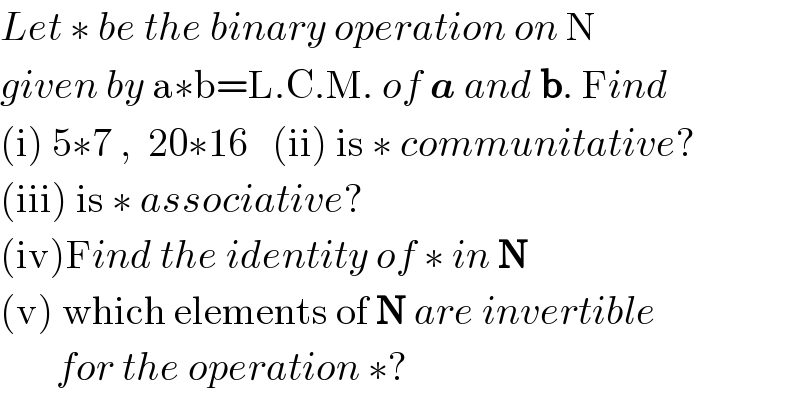
Question and Answers Forum
Question Number 93950 by oustmuchiya@gmail.com last updated on 16/May/20

Answered by som(math1967) last updated on 16/May/20
![i) 5∗7=L.C.M of 5,7=35 20∗16=L.C.M of 20,16=80 ii) L.C.M of a,b=L.C.M of b,a ∴∗ is commutative [for all a,b∈N] iii)( L.C.M of a,b)∗c =L.C.M of a,b,c = a∗(L.C.M of b,c) =L.C.M of a,b,c ∴ ∗ is associative](Q93997.png)
Answered by som(math1967) last updated on 16/May/20
![iv) Let e∈N be the identity element in N ∴a∗e=a [a∈N] L.C.M of a,e=a but a∈N ∴e=1 is identity eliment in N ans](Q94007.png)
Commented by oustmuchiya@gmail.com last updated on 16/May/20

Commented by oustmuchiya@gmail.com last updated on 16/May/20

Commented by som(math1967) last updated on 16/May/20
![a∗b=HCF of a,b [a,b ∈{1,2,3,4,5}] =b∗a=HCF of b,a so a∗b commutative ....](Q94043.png)
